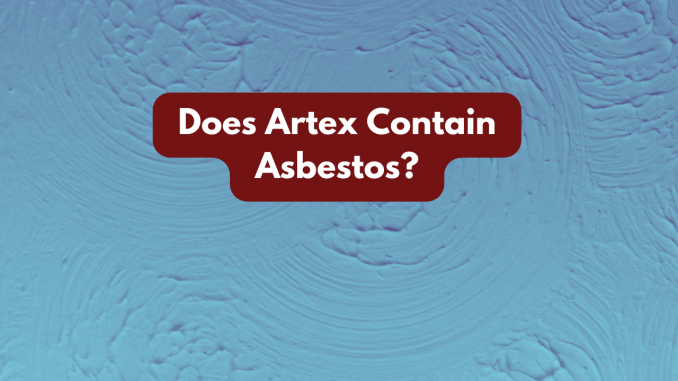
Artex is a brand of textured coating used on ceilings and walls, and it was commonly used in the past, which means asbestos fibres can be released into the air when Artex is sanded or scraped.
Artex no longer uses asbestos but some older formulations of Artex, particularly those manufactured before the mid-1980s, may contain asbestos. Asbestos was used for its fire-resistant and insulating properties in various construction materials, including some textured coatings. Previously, the approximate percentage of asbestos in Artex coatings is between 2-5%.
If your property was built or renovated before the mid-1980s, and you suspect that the Artex or any other textured coating contains asbestos, it is crucial to take precautions. Asbestos can pose serious health risks when its fibres become airbourne and are inhaled.
Why was Asbestos Used in Artex?
Asbestos was commonly used in various building materials, including textured coatings like Artex, due to its desirable properties. Asbestos has several qualities that made it attractive for use in construction materials:
- Fire Resistance: Asbestos is highly resistant to heat and fire, making it an effective fireproofing material. This property was particularly important for building materials to enhance fire safety.
- Strength and Durability: Asbestos fibres are strong and durable, contributing to the strength and longevity of the materials in which it was used. This made asbestos a popular choice for construction applications where durability was a key factor.
- Insulating Properties: Asbestos has excellent insulating properties, both for thermal and acoustic insulation. This made it valuable in providing insulation in various construction products, including textured coatings like Artex.
- Chemical Resistance: Asbestos is resistant to many chemicals, which made it suitable for use in diverse industrial and construction applications.
The health risks associated with asbestos exposure were not fully understood or widely recognised until later years. Asbestos-related diseases, such as asbestosis, lung cancer, and mesothelioma, are serious health concerns that can result from inhaling asbestos fibers. Due to these health risks, the use of asbestos has been largely phased out in many countries, and there are strict regulations and guidelines in place for its management and removal when found in existing structures.
How to Tell if you Have Asbestos?
To determine whether Artex contains asbestos, you need to have a sample tested by a qualified asbestos testing laboratory. It’s important to follow proper procedures for handling and testing potential asbestos-containing materials. You should not just cover artex with paint if you suspect you have asbestos.
If you are unsure about the presence of asbestos or concerned about its potential health risks, it is advisable to consult with asbestos professionals or licensed asbestos abatement contractors for proper assessment and, if necessary, removal of the material. Always prioritise safety and follow guidelines provided by local authorities when dealing with asbestos-containing materials.
DISCLAIMER: Easy Home Improvement are not Asbestos or Health & Safety specialists and we strongly advise you seek professional help if you suspect you have asbestos in your house.

Leave a Reply